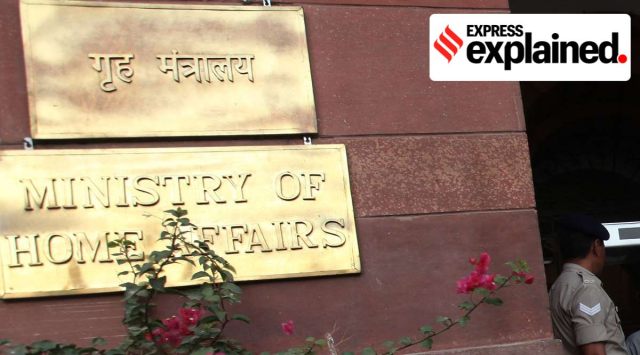Rules for deputation of DIGs: what Centre proposes to change, and why
The Centre has issued a new order on central deputation of Deputy Inspector General-level IPS officers. What is the order and why has it been issued? How will the move help? Will states have a problem?
 Cases registered for crime against SCs rose from 42,793 in 2018 to over 50,000 in 2020, and of crime against STs from 6,528 to 8,272 in the same period.
Cases registered for crime against SCs rose from 42,793 in 2018 to over 50,000 in 2020, and of crime against STs from 6,528 to 8,272 in the same period.
After its proposal to amend the All India Service Rules that would allow it to call any IAS, IPS or IFoS officer on central deputation with or without the state’s consent, the Centre has issued another order on central deputation of Deputy Inspector General-level IPS officers that may not be palatable to the states.
🗞️ Subscribe Now: Get Express Premium to access the best Election reporting and analysis 🗞️
What is the order?
In an order issued on February 10, the Department of Personnel and Training (DoPT) has said that IPS officers coming to the Centre at DIG level would no longer be required to be empanelled at that level with the Union Government.
According to existing rules, a DIG-ranked IPS officer with a minimum experience of 14 years could only be deputed to the Centre if the Police Establishment Board empanelled them as DIGs at the Centre. The board chooses the panel on the basis of officers’ career and vigilance records. Only Superintendent of Police-level officers do not require empanelment at the Centre.
The new order makes the entire pool of DIG-level officers in a state eligible for central deputation.
Why has it been issued?
Sources in the Ministry of Home Affairs (MHA) said the move is aimed at increasing the pool of DIG-level IPS officers for central deputation in the backdrop of massive vacancies in central police organisations (CPOs) and the Central Armed Police Forces (CAPFs).
According to data sourced from various CPOs and CAPFs, out of 252 posts reserved for IPS officers at DIG level at the Centre, 118 (almost half) are vacant. IPS officers have a quota of 40% in CPOs and CAPFs. The Centre had in November 2019 written to states proposing to decrease this quota by 50%, saying more than 60% posts remain vacant since most states do not spare their officers.
How will the move help?
According to MHA sources, the idea is to ease up the process of central deputation as verification of records takes a long time. “Because the number of DIGs is high, the empanelment process had become cumbersome and it was taking as long as one year to just complete the process,” an official said.
Also, it increases the size of the pool of officers available to the Centre.
However, this would not automatically allow DIGs to come to the Centre. Officers would still have to be put on the offer list for central deputation which is decided by the states and the Centre in consultation. Also, states would have to be willing to relieve them.
So why would states have a problem?
If read with the recent proposal on deputation of IAS, IPS and IFoS officers, the new order may be seen by many states as the Centre’s attempt at pushing the envelope further on increasing its powers over officers serving in the states.
Under the proposals sent In December and January, the Centre would have powers to demand, within a stipulated time frame, a certain quota of officers from the state for central deputation, and also to call any IAS officer on central deputation in “public interest”. In case the state failed to relieve the officer, he/she would be deemed relieved following the date fixed.
Most states, including some ruled by the NDA, have opposed the move.
Also, there is little evidence of a waiver of empanelment conditions having an impact on vacancies at the Centre. For example, there is no requirement of empanelment for SP level posts, yet the vacancies are close to 50%.
Why don’t states relieve officers?
Because there is a serious paucity of officers in the states too. In a cost-cutting move during the Atal Bihari Vajpayee regime, the size of IPS batches among other government staff was reduced even though sizeable vacancies existed even then. From 80-90 officers each, IPS batches were cut to 35-40 officers (in 1999-2002, the average was 36). The average attrition rate of IPS officers due to superannuation is 85 per year.
“While the number of districts in some states doubled in a decade or so, the availability of officers was one third,” a former MHA official said.
In 2009, against a sanctioned strength of over 4,000 IPS officers, there were more than 1,600 vacancies. During the Manmohan Singh regime, the government began intake of IPS batches as large as 150. The government has continued to increase the size of batches with the 2020 Civil Services Exams taking in 200 IPS officers. According to the MHA, as on January 1, 2020, there were 908 vacancies against a sanctioned strength of 4,982.
The strength of IAS officers too had been impacted due to low intake during the 1990s.
How has this impacted the services?
The anomaly in IPS recruitment adversely affected cadre management over the years. At some levels, there are fewer officers than sanctioned posts, while at others there is a glut. On one hand, states are not providing enough DIGs or SPs to the Centre, while on the other, the Centre does not have enough posts if the total cadre reserve of IPS is calculated.
Uttar Pradesh has a shortage of DIGs and IGs, but too many officers at the level of ADGs.
Then while states should ideally promote batches or parts of it according to the vacancies available, political bosses often promote entire batches to please a certain section, in effect slamming doors on promotional avenues for those below them.
CAPF officers, themselves facing career stagnation, have been demanding removal of the DIG-level quota for IPS officers as they are unwilling to join, so that force cadre officers can instead fill these posts.
Sources say that by 2025, states may have surplus officers at DIG level to spare for the Centre and, if Centre-state relations remain normal, the issue may be resolved.
Newsletter | Click to get the day’s best explainers in your inbox
- 01
- 02
- 03
- 04
- 05







































